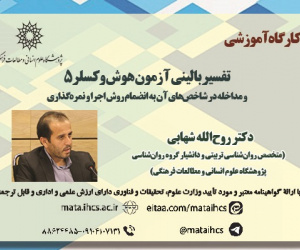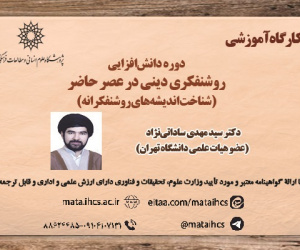طراحی و اعتباریابی مدل توسعل ورزش های پایه: مطالعه موردی استان خراسان رضوی (مقاله علمی وزارت علوم)
درجه علمی: نشریه علمی (وزارت علوم)
آرشیو
چکیده
هدف: هدف پژوهش حاضر طراحی و اعتباریابی مدل توسعه ورزش های پایه بود.روش شناسی: روش پژوهش حاضر ترکیبی- اکتشافی و از نظر هدف کاربردی است. جامعه آماری بخش کیفی شامل خبرگان مرتبط با ورزش های پایه در استان خراسان رضوی در سال 1398 بودند که با روش نمونه گیری هدفمند 35 نفر از آنها انتخاب شدند. بخش کمی نیز مدیران باشگاه ها، مربیان رده های سنی در ورزش های پایه (333 نفر) بودند که بر اساس جدول مورگان تعداد 181 نفر به عنوان حجم نمونه و با روش نمونه گیری تصادفی انتخاب شدند. ابزار پژوهش در بخش کیفی مصاحبه و در بخش کمی پرسشنامه ای حاوی 2 بعد و 63 گویه بود. اعتبار ابزار با روایی همگرا و پایایی با ضرایب آلفای کرونباخ(80/0) حاصل شد. تجزیه و تحلیل داده های کیفی با روش تحلیل مضمون و برای پاسخ به سوالات پژوهش از روش های آمار توصیفی و آمار استنباطی با کمک نرم افزار SPSS نسخه 21 و LISREL نسخه 8/8، استفاده شد. یافته ها: یافته های کیفی پژوهش به شکل گیری دو بعد محوری یعنی راهبردهای سازمانی با 5 مؤلفه (راهبردهای مدیریتی، مالی، پژوهشی، نرم افزاری و سخت افزاری) و راهبردهای فراسازمانی با 3 مؤلفه (راهبرد اجتماعی، فرهنگی و انگیزشی، راهبرد رسانه ای و راهبرد قانونی و دولتی) منجر شد که ذیل مضمون کلان راهبردهای توسعه ورزش های پایه قرار دارند. همچنین آزمون برازش مدل پژوهش نشان داد که ارزیابی کلی مدل راهبردهای توسعه ورزش های پایه دارای برازش قوی و مطلوب است(54/0=GOF).نتیجه گیری: مدل نهایی توسعه ورزش های پایه با دو راهبرد سازمانی و فراسازمانی می تواند برای مسئولین و مدیران حوزه سیاست گذاری ورزشی در جهت توسعه ورزش های پایه در مدارس مورد توجه قرار گیرد.Design and validation of the basic sports development model: Case study of Khorasan Razavi province
Objective: The purpose of this study was to design and validate the basic sports development model.Methodology: This research adopted a combining qualitative and quantitative approaches and is considered applied research in terms of purpose. The statistical population of the qualitative section consisted of experts related to basic sports in 2019, where a targeted sampling method was used to select 35 were out of that subset of individuals. The quantitative section consisted of club managers, Age-class coaches of basic sport (333 individuals) from which 181 were selected as the sample size based on the Morgan table using random sampling. Interviews were used as the research tool in the qualitative section and a questionnaire containing 2 dimensions and 63 items was used in the quantitative section. The validity of the tool was confirmed through the Convergent Validity parameter and Cronbach alpha coefficients of reliability (80/0). Qualitative data analysis was done using the content analysis method and descriptive statistics and inferential statistics were used to answer research questions, assisted by SPSS software and LISREL.Findings: Qualitative findings of the research into the formation of two central dimensions, organizational strategies with 5 components and transnational strategies with 3 components led to the following major themes of basic sports development strategies. It has also been shown by the research Model-Fit test that the overall evaluation of the basic sports development strategies has a strong and desirable rating (GOF=54/0).Conclusion: The final model can be used by sports policy officials and managers towards the development of basic sports.







